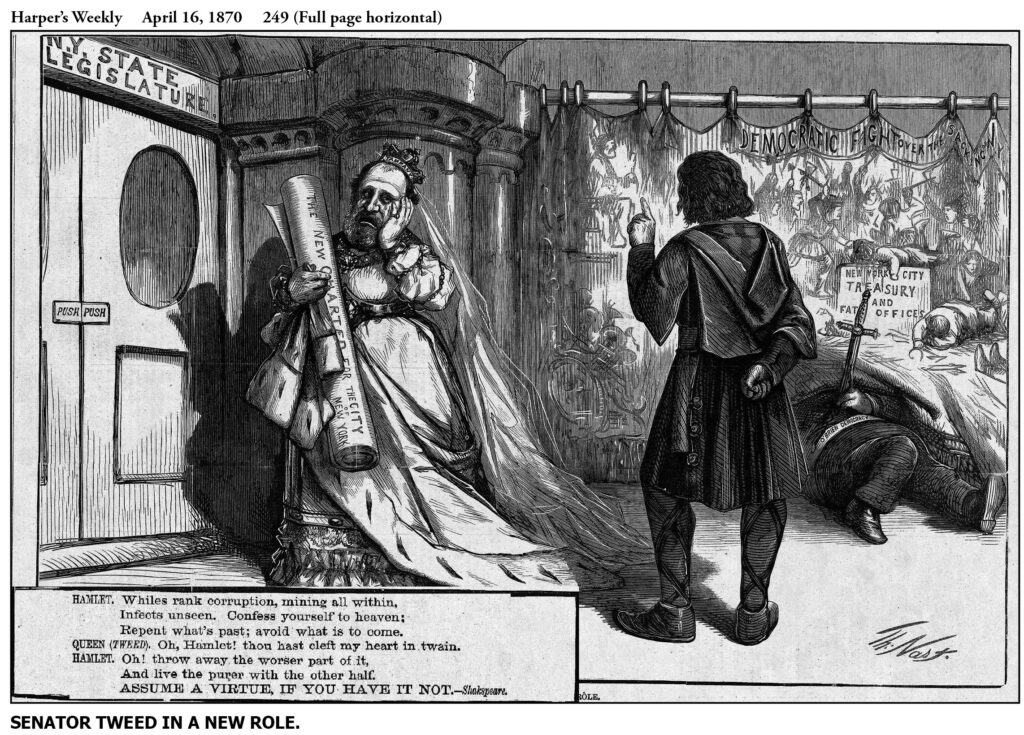
Harper’s Weekly – April 26, 1870
New York had both a city and an overlapping county government, providing duplicate opportunities for patronage and graft. The Common Council/Aldermen (“Forty Thieves”) prepared the City budget, while the Board of Supervisors prepared the County budget. Each body could levy taxes and issue bonds. Some individuals worked for both simultaneously, drawing two salaries and essentially doing the same job. Others were sinecures whose only “work” was to collect their pay.
In order to gain total control, Boss Tweed had to remove one final obstacle: the authority of the State Legislature to approve New York City and County tax bills. By reportedly giving over $1,000,000 in bribes to state legislators in April 1870, Tweed obtained a “reform” charter which provided home rule for the metropolis and was signed into law by Governor John Hoffman. It not only deprived the public of all control over the amount and disposal of their tax dollars, but it ensured that Richard (Slippery Dick) Connolly could not be replaced as Comptroller (and financial fixer) for at least five years without his agreement. That turned out to be a critical provision 17 months later when the Ring came apart.
“Tweed’s Charter” and related tax legislation (requiring additional bribes) established a “Board of Special Audit” — comprised of Mayor Oakey Hall, and Tweed (as president of the newly-created Public Works Commission) — to pay pre-dated as well as current claims, 90% of which involved huge phony mark-ups on contractor invoices and reciprocal kickbacks.
Nast used Shakespeare’s Hamlet (for the first of 14 times) to skewer Tweed. Hamlet (Hoffman) lectured his bearded mother, Queen Gertrude, (Tweed) on corruption; “she” was dressed in an opulent gown and a Tammany crown.
James (Jimmy) O’Brien had staged a revolt against Tweed and founded an opposition movement which failed. Nast depicted “O’Brien Democracy” lying dead with a sword sticking out of its belly, while a “Democratic fight over the sacking of NY” raged in the background. After unsuccessfully blackmailing Tweed, O’Brien got his revenge by turning whistle-blower and giving the Ring’s financial records to The New York Times.
Although the Times had supported Tweed’s Charter in April 1870, the sudden death of a pro-Tweed director in August 1870, enabled the paper to publish the Ring’s financial records and, in conjunction with Nast’s cartoons, bring the Ring down.
